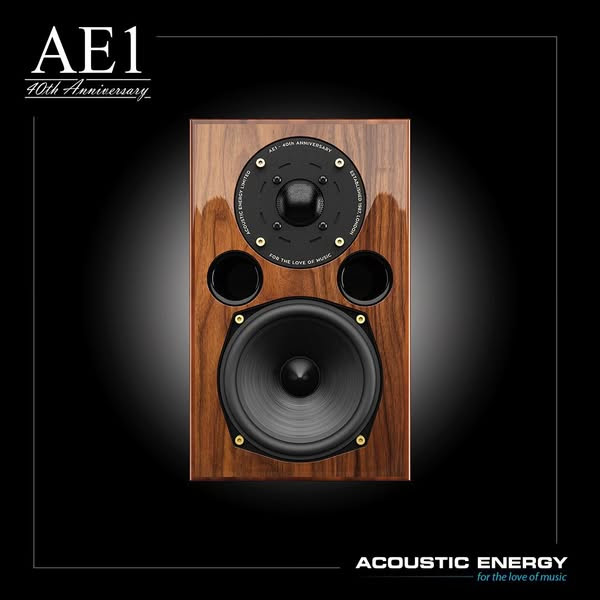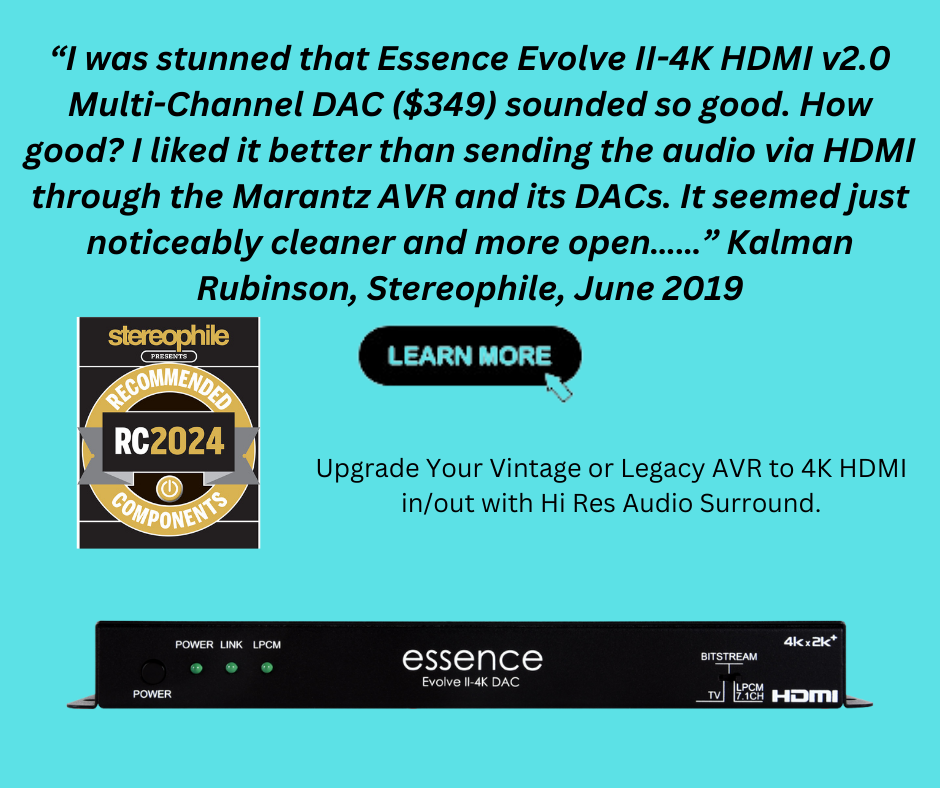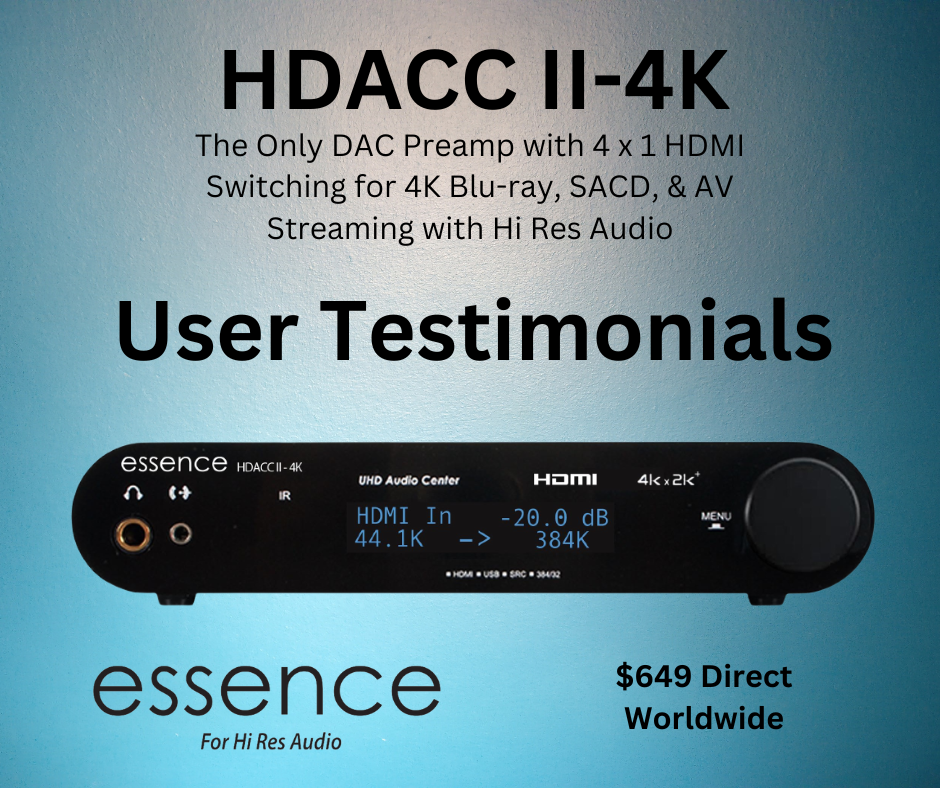Bob Rapoport
Music Reviewer
Thread Starter
- Joined
- Jan 29, 2018
- Posts
- 113
More
- Preamp, Processor or Receiver
- Essence HDACC II-4K
- Main Amp
- Essence DPA-440
- Universal / Blu-ray / CD Player
- Sony 4K
- Front Speakers
- Essence Electrostats
- Center Channel Speaker
- Essence
- Surround Speakers
- Essence
- Subwoofers
- Essence
- Screen
- Screen Goo painted screen, 4 coats
- Video Display Device
- Vizio M70
- Remote Control
- Essence
Last month we focused on On-Axis Listening — why pointing your speakers directly at your ears is critical for accuracy, clarity, and focus. This month, we’re taking the next logical step: arrival time — the invisible ingredient that makes a stereo image snap into place and become real.
If the sound from the left and right channels doesn’t reach your ears at exactly the same moment, you won’t get that holographic, palpably three-dimensional “performer in the room” sensation. Instead, the image collapses toward the earlier arriving sounds, smearing the spatial cues your brain needs to localize instruments and voices in the space between the speakers with precision.
The underlying principle has a name:
In stereo, that means:
The good news? This is easy to fix:
Only the person in the exact sweet spot — centered, equidistant, and on-axis — hears the full illusion: the pinpoint center image, the stable left/right panoramas, and the three-dimensional depth that makes great recordings feel alive.
Move even slightly:
A collapsed, flattened stereo image.
It’s why listening rooms at audio shows always have “the chair.”
It’s why reviewers sit dead center.
It’s why audiophiles measure in inches and degrees.
Because stereo — real stereo — was designed for one listener.
Everyone else gets good sound.
Only one gets the illusion.
If the sound from the left and right channels doesn’t reach your ears at exactly the same moment, you won’t get that holographic, palpably three-dimensional “performer in the room” sensation. Instead, the image collapses toward the earlier arriving sounds, smearing the spatial cues your brain needs to localize instruments and voices in the space between the speakers with precision.
The underlying principle has a name:
The Precedence Effect
Your brain is wired to identify the first arriving sound and treat it as the true origin point, it's a survival skill among all mammals. Even if a second copy of that sound arrives a few milliseconds later, your auditory system fuses the events into one — and uses only the earliest arrival to determine direction.In stereo, that means:
- If your right speaker is even one inch closer, its signal arrives earlier.
- Your brain latches onto that earlier arrival.
- The entire image shifts right, vocals drift off-center, and the “sweet spot” isn’t sweet anymore.
Why This Matters for Real-World Listening
The illusion of a solid center image — the singer dead-center between the speakers — relies on perfect simultaneity. The moment one side dominates, the illusion collapses, no matter how good your gear is.The good news? This is easy to fix:
- Sit exactly centered between your speakers
- Match the distance from each speaker to your listening position
- Toe-in both speakers symmetrically
- Keep reflective surfaces (walls, windows, coffee tables) equidistant when possible
The Inconvenient Truth
There’s one myth that refuses to die — the idea that a “wide listening area” can deliver the same stereo magic no matter where you sit. It can’t. True stereophonic imaging is a one-seat experience.Only the person in the exact sweet spot — centered, equidistant, and on-axis — hears the full illusion: the pinpoint center image, the stable left/right panoramas, and the three-dimensional depth that makes great recordings feel alive.
Move even slightly:
- Sit a foot left or right on the sofa → the image shifts toward the nearer speaker.
- Sit behind the sweet spot → you’re off-axis to both speakers as their on-axis lines cross in front of you.
- Sit anywhere else → reflected energy dominates over direct sound.
A collapsed, flattened stereo image.
It’s why listening rooms at audio shows always have “the chair.”
It’s why reviewers sit dead center.
It’s why audiophiles measure in inches and degrees.
Because stereo — real stereo — was designed for one listener.
Everyone else gets good sound.
Only one gets the illusion.












